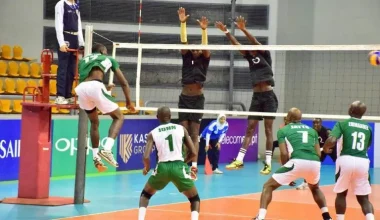You have been watching the Olympic games over the years, right? Have you ever wondered if disabled persons ever have the opportunity to compete in an Olympic game? Yes, they do. This special type of game is called Paralympic Games.
In this writing, we will discuss extensively, the Paralympic Games: Brief History, Committee, and Top Winners. It might surprise you that Paralympic Games have been around for a long time and have received international recognition over the years.
It is held every four years just like the normal Olympic Games. The next Paralympic Games will be in 2020 in Tokyo, Japan.
What are the Paralympic Games?
The periodic series of the Paralympic Games or Paralympic Games, in which athletes with a range of disabilities, including muscular disorders (eg, paraplegia and quadriplegia, muscular dystrophy, post-polio syndrome, spina bifida), participate in restricted passive mobility. Limb deficiency (e.g. amputation or dysmelia), leg length difference, short stature, hypertension, ataxia, athetosis, impaired vision, and mental retardation.
There are winter and summer Paralympic Games that have been taking place in Seoul, South Korea since the 1988 Summer Games, almost immediately after the respective Olympics.
All Paralympic Games are led by the International Paralympic Committee (IPC).
The International Paralympic Committee (IPC) has set ten disability categories. The athletes are classified according to the degree of their impairment in a different from sport to sport function classification system.
Categories of Paralympic Games
The IPC has identified ten categories of disability, including physical, visual and mental impairment. Athletes with any of these disabilities can participate in the Paralympics, though not every sport allows for any disability category.
These categories apply to both summer and winter Paralympics.
Physical impairment – There are eight types of physical impairment:
Impaired Muscle Strength – Impaired in this category, the power generated by muscles such as the muscles of one limb, one side of the body, or the lower half of the body is reduced (eg spinal cord injury, spina bifida, post-polio syndrome).
Impaired passive range of motion – The range of motion in one or more joints is systematically reduced. Acute diseases such as arthritis are not included.
Loss of Limbs or Limbs – A total or partial absence of bones or joints due to partial or total loss due to illness, trauma or congenital limb deficiency (e.g. Dysmelia).
Leg length difference – Significant bone shortening occurs in one leg due to congenital deficiency or trauma.
Dwarfism – Headroom is reduced by shortened legs, arms, and trunks due to a musculoskeletal deficit of bone or cartilage structures. (E.g. achondroplasia, growth hormone deficiency, osteogenesis imperfecta)
Hypertension – Hypertension is characterized by an abnormal increase in muscle tension and decreased muscle extensibility. Hypertension can result from injuries, diseases or conditions that damage the central nervous system (e.g. cerebral palsy).
Ataxia – Ataxia is an impairment consisting of a lack of coordination of muscle movements (eg, cerebral palsy, Friedreich’s ataxia, multiple sclerosis).
Athetosis – Athetosis is generally characterized by unbalanced, involuntary movements and a difficulty in maintaining a symmetrical posture (e.g., cerebral palsy, choreoathetosis).
Vision Disability – Athletes with visual impairment range from a partial vision sufficient to be considered blind to total blindness. This involves impairment of one or more components of the visual system (eye structure, receptors, optic nerve pathway, and visual cortex).
The sighted visually impaired guides are such a close and integral part of the competition that the visually impaired and the guide are considered a team.
Intellectual disability – Athletes with a significant impairment of intellectual functions and concomitant limitations of adaptive behavior. The IPC primarily serves athletes with physical disabilities, but the disability group Intellectual Disability has been added to some Paralympic Games.
This includes only top athletes with mental retardation who were diagnosed before the age of 18. However, the IOC-recognized Special Olympics World Games are open to anyone with intellectual disabilities.
What are Paralympic Sports?
There are currently 28 Paralympic sports: 22 summers and six winters. The two newest sports to receive the Paralympics status are Badminton and Taekwondo, both of which will make their debut at the 2020 Tokyo Games, while the newest winter sport is snowboard, first unveiled at the 2014 Paralympics Winter Games in Sochi
Summer Sport
The summer Sports include Archery, Athletics, Badminton, Boccia, Canoeing, Cycling, Equestrian, Soccer 5, Torball, Judo, Powerlifting, and Rowing, Parasailing, Volleyball, Swimming, Table tennis, Taekwondo, Triathlon, Wheelchair basketball, Wheelchair Fencing, Wheelchair rugby, and Wheelchair tennis.
Winter Sports
Winter sports include Alpine skiing, biathlon, cross-country skiing, para-hockey, snowboarding, and curling in a wheelchair
Since the first games in Rome in 1960, the size size of the Paralympics has grown exponentially. Today, the event provides a platform for para-athletes with a variety of disabilities to showcase their outstanding skills to millions of viewers and billions of television viewers.
Who invented the Paralympic Games?
In 1948, Sir Ludwig Guttmann organized a sports competition in Stoke Mandeville, England, which involved World War II veterans with spinal cord injuries.
Four years later, participants from the Netherlands participated in the games, and the international movement, now known as the Paralympic Movement, was born.
Athletes’ Disabilities Olympics were organized in Rome for the first time in 1960. Other disability groups were added in Toronto in 1976, and the idea of bringing together various disability groups for international sports competitions was born.
In the same year took place in Sweden, the first Paralympic Winter Games.
What is International Paralympic Committee?
The IPC is an athlete-centered organization composed of an elected board of directors, a management team, and various standing committees and councils that organizes supervise, and coordinates the Paralympic Games. It allows Paralympic athletes to perform at their best and to inspire and inspire the world.
Founded on September 22, 1989, as an international nonprofit organization, the IPC, has its headquarters in Bonn since 1999 and more than 110 team members, under the leadership of the Chief Executive Officer, who works in all business affairs of the Paralympic Movement. The current president of the International Paralympic Committee Andrew Parsons.
The main mission of the IPC is to assist our more than 200 members in the development of Parasports, promote social inclusion, ensure the successful implementation and organization of the Paralympic Games, and act as an international association for 10 Parasports.
Membership in IPC
Membership is composed of National Paralympic Committees (NPCs), International Federations (IFs), Regional Organizations, and International Sports Organizations for Disabled People (IOSDs).
The commitment and duties of these members are part of the IPC Handbook, the ultimate reference document, and the framework of the Paralympic Movement.
Paralympic Game Notable Top winners
Trischa Zorn
Trischa Zorn is an American swimmer. Blind at birth, she participated in the Paralympic Swimming (S12, SB12, and SM12 Disability categories).
With 55 medals (41 gold, 9 silver, and 5 bronze medals), she is the most successful athlete in the history of the Paralympic Games and was admitted to the Paralympic Hall of Fame in 2012.
Maria Scutti
Maria Scutti was born in Altino in the Italian province of Chieti. She lost her legs in a traffic accident. Scutti participated in the 1960 Summer Paralympics in her native Italy.
She participated in eleven litter competitions in athletics, won nine of them and finished in the remaining two in third place. She won a gold in swimming for the 50m chest and a silver in the 50m back.
Scutti also won a silver medal in wheelchair fencing and table tennis. These achievements mean that Scutti is one of the most successful Paralympians in a single game.
Roberto Marson
Roberto Marson was an Italian multi-sports athlete who has participated in the Paralympics four times and won a total of 26 Paralympic medals. He lost the use of his legs when a jaw he fell on his back.
He is represented in the Visa Paralympic Hall of Fame of the International Paralympic Committee. From 1980 to 1990 he was president of Federazione Italiana Sport Handicappati.
He died in 2011 and was inducted into the International Paralympic Hall of Fame in 2012
John Morgan
John Morgan is an American swimmer who has won 13 gold medals in two Paralympic Games. He debuted in 1984 at the Summer Paralympics, where he won five gold medals, and then returned to the 1992 games in Barcelona, where he won medals in all ten competitions in which he participated.
Morgan’s success in these games included setting six world records; during his career, he set a total of 14 world records.
He was inducted into the United States Olympic Hall of Fame in 2008 and the United States Association of Blind Athletes’ Hall of Fame in 2011.
Jacqueline Freney
Jacqueline Rose “Jacqui” Freney is an Australian Paralympic swimmer. At the 2012 London Games, she broke Siobhan Paton’s Australian record of six gold medals in a single game by winning her seventh gold medal in the women’s 400m Freestyle.
She finished the games with eight gold medals, more than any other participant in the games.
Mayumi Narita
Mayumi Narita is a Japanese swimmer known by the International Paralympic Committee as “one of the best Paralympic athletes in the world.” Japan Today has described her as “a swimming sensation perhaps the size of the Thorpedo, but few people know its name”. She has won 15 gold medals at the Paralympics and a total of 20.
Narita has been using a wheelchair for myelitis since age 13. In 1994, she was also involved in a traffic accident in which her tetraplegia was left behind.
She represented Japan at the 1996 Paralympic Games in Atlanta, where she won two gold medals, two silver medals, and a bronze medal. At the Summer Paralympics 2000 in Sydney, she won six gold medals. She also set five world records at the Sydney Games
Marijke Ruiter
Marijke Ruiter is a Dutch retired swimmer who won ten gold medals at the 1972 and 1976 Paralympic Games
Conclusion
Having been equipped with this information, you now have handy all that you need to know about Paralympic Games: Brief History, Committee and Top Winners and might want to encourage or do a recommendation to a disabled person of the possibility of becoming an Olympic medalist, in spite of the physical challenges they are facing.
DISCLOSURE: This post may contain affiliate links, meaning when you click the links and make a purchase, we receive a commission.






Comments are closed.